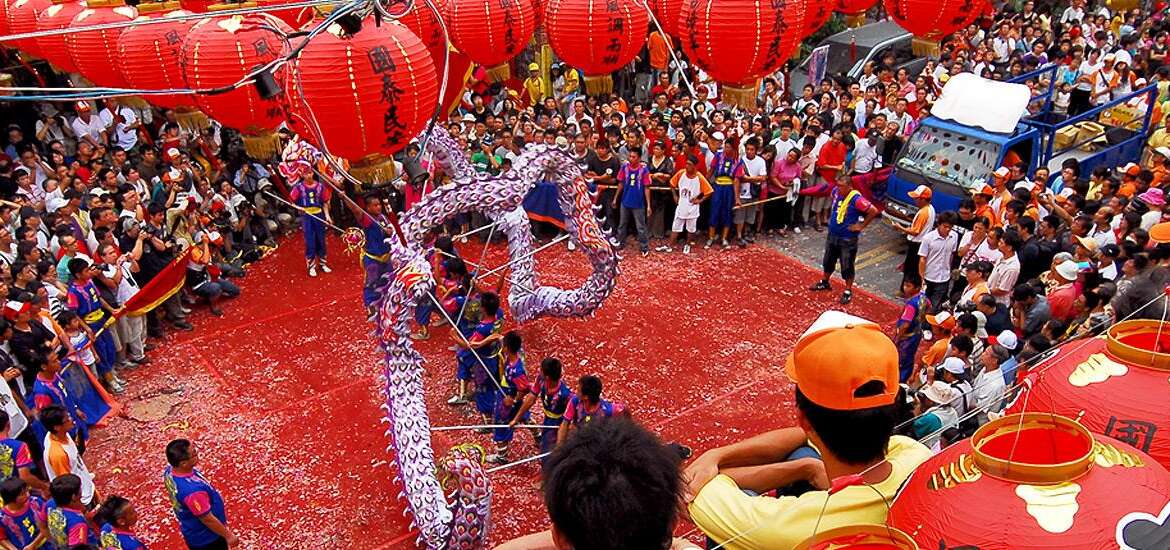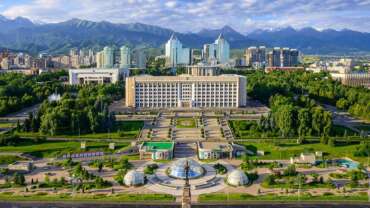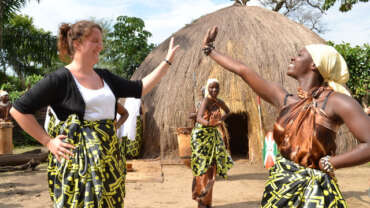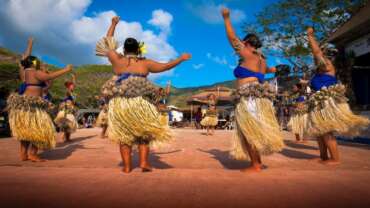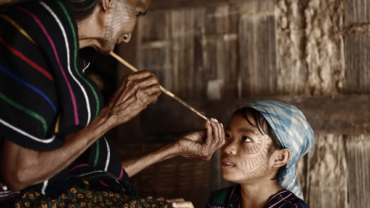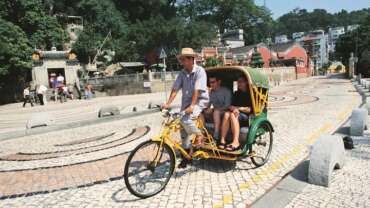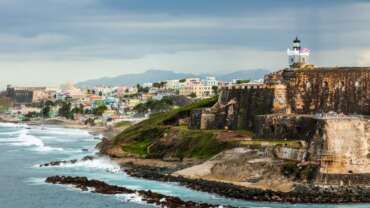Taiwan - Heart of Asia!
Taiwan, officially the Republic of China, is a country in East Asia. Neighbouring countries include the People’s Republic of China to the northwest, Japan to the northeast, and the Philippines to the south.
Taiwan is a precious island; it expresses itself differently in each season. After the “year of bay tourism” of 2018 and the “year of small-town tourism” of 2019, now we are promoting the “year of mountain tourism” of 2020 in Taiwan, touting our five main mountain ridges through the classic mountain travel itineraries designed by experienced governmental agencies. We aim to draw visitors from abroad and lead them to explore our high mountains, thereby making Taiwan a world-class destination country. We shall make Taiwan a globally renowned hiking and trekking sanctuary. Again, our goal is to attract, receive, and keep overseas visitors here in Taiwan with our beautiful high mountains, whilst expanding the scale of domestic tourism. To boost our tourism economy, in the near future, we will also promote low-carbon tours with cycling and railway themes. With a focus on further developing our country, and based on the APEC Tourism Minister Meeting’s concept of “harnessing sustainable and inclusive tourism for the Asia Pacific,” we look forward to introducing Taiwan’s iconic culture, nature and industry, as well as our hospitable people to the world.
Smart travel should always be based on heartfelt services. Taiwanese people are hospitable, and looking forward, by 2030, from every two locals receiving one foreign visitor on average, every three locals shall be receiving two foreign visitors. That is, Taiwan will be visited by 20 million foreigners annually by then, instead of 1.5 million tourists now. As to the domestic tourism market, the government plans to hold large activities and integrate special offers along with regional agencies, moving towards the goal of 2,400 million annual domestic visitor counts, from the present 2,000 million. We want Taiwan to be an important destination country that is “friendly, smart, and worth experiencing.”
Taiwan is ideal for island-hopping, small-town tours, mountaineering, and forest hiking. If you are a fan of Taiwan, please visit us often. You shall enjoy this country in many different ways through the refreshing travel experiences we offer!
History of Taiwan
Early history
There are references to Taiwan in Chinese court records dating to the 3rd century BCE. The first recorded contact between China and Taiwan occurred in 239 CE, when the Chinese emperor sent a 10,000-man mission to Taiwan to explore the island. In 605 China sent another expedition, which brought back to China several aboriginal people from Taiwan, who were taught Chinese. A follow-up mission went to Taiwan to gather more information. During the Yuan dynasty (1206–1368), when the Mongols ruled China, the P’eng-hu (Penghu) Islands in the Taiwan Strait were brought under China’s control. In 1430 the Ming dynasty’s famous explorer Zheng He (Cheng Ho) landed on Taiwan and obtained from the aboriginal peoples herbal medicines that were said to have “miracle powers.”
Meanwhile, perhaps as early as the 7th century, Chinese fishermen visited the P’eng-hu Islands, and probably some farmers settled there and on Taiwan itself. In any event, there were Chinese settlements on the island of Taiwan before the 12th century. Chinese and Japanese pirates also frequently used the island as a base of operations, and some Japanese settlements were established there.
The early Chinese settlers were in imminent danger of raids by aboriginal peoples, who practiced head-hunting and coveted Chinese heads—possession of which demonstrated a sign of manhood and their qualifications for marriage. Early Chinese societies on the island were thus organized to a considerable degree on the basis of a concern with security. However, there was only infrequent contact among the Chinese settlements, and there was no common government or body of laws.
In 1517 a Portuguese ship sailed through the Taiwan Strait, and the ship’s log recorded the words “Ilha Formosa,” meaning “Beautiful Island” in Portuguese. Formosa subsequently became the Western term for Taiwan. But the ship did not stop, and the Portuguese did not lay claim to Taiwan. In 1622, Dutch forces landed in the P’eng-hu Islands (which the Portuguese had called the Pescadores [“Fishermen”] because a large portion of the population there was engaged in fishing) and established a presence there. The next year, a Chinese official gave the Dutch a trading post on Taiwan and other privileges in exchange for leaving the P’eng-hu Islands. In 1626, Spanish forces seized Chi-lung (Jilong or Keelung) and expanded their presence on the island from there. Japanese settlers on the island left shortly after that.
In 1642, Dutch forces expelled the Spanish, put down a rebellion by Chinese inhabitants, and, with the help of aboriginal peoples, established control over the entire island. As a result, Taiwan became a Dutch colony, governed by the Dutch East India Company. The company dug wells, conducted land surveys, and created the basis for expanded commerce, including trade with China and other places in East Asia. It introduced new farm implements and the use of oxen to till the fields. In addition, its representatives developed a written language for the aboriginal peoples and converted many to Christianity.
During the Dutch period the Chinese population in Taiwan was considerably smaller than the aboriginal population. The Dutch encouraged Chinese immigration, though the Chinese did not give their loyalty to the Dutch. At that time Ming-dynasty China was being threatened by the Manchu—inhabitants of Manchuria (now northeastern China). In 1644 they took Beijing (the Ming capital) and established the Qing (Manchu) dynasty. Nevertheless, resistance against the Manchu continued in southeastern China, and the pirate leader Zheng Zhilong (Cheng Chih-lung) took command of the remnant Ming naval forces to battle the Manchu. Zheng, however, soon switched his loyalty to the Qing.
Zheng’s son Zheng Chenggong (Cheng Ch’eng-kung), born in Japan to a Japanese mother, refused to follow after his father and instead launched a prolonged campaign of resistance against the Manchu from bases along the Fujian (Fukien) coast of China. By 1661, however, Zheng had failed in his effort, and he turned his attention to Taiwan. He took a large number of Chinese to Taiwan, many of whom had enlisted in his army. Later that year Zheng (whom the Dutch called Koxinga) launched an attack on the Dutch stronghold of Zeelandia (near present-day T’ai-nan) and laid siege to it. The Dutch surrendered in early 1662 and were evacuated, thus ending the Dutch presence in Taiwan. This was the first instance of the “liberation” of a Western colony.
Zheng established a Ming-style government on the island and promoted Chinese culture. Chinese bureaucratic rule, however, did not work well there, as it was superimposed on a social system that was basically feudal. Zheng did not establish ties with Manchu-ruled China. He did, however, encourage Chinese immigration to Taiwan, and he promoted commerce and foreign trade. Zheng had tried to establish ties with the Chinese communities in the Philippines to build support for his continued efforts to restore Ming rule in China, but he died suddenly in June 1662 before he could act further on any of his plans.
After his death, his son Zheng Jing (Cheng Ching), operating from a power base in Fujian province, vied with his uncle in Taiwan for succession. Zheng won, and, like his father and grandfather, he fought the Manchu. He too failed, however, and retreated to Taiwan. His early death was followed by court intrigue in Taiwan, which gave the Manchu in China an opportunity to invade and take the island, which they did in 1683.
For the next two centuries Taiwan was governed as part of Fujian province. The Qing government sent officials to rule Taiwan who did not regard their assignments highly. They considered Taiwan beyond the pale of Chinese civilization. The period of Chinese governance was thus characterized by frequent rebellions followed by severe punishments meted out by the government to keep order.
The inhabitants of Taiwan were not happy with rule by the Chinese, whose ruthlessness was partly due to the fact that the Qing government was dominated by the “foreign” Manchu, not the Han Chinese, and the Manchu feared the “Chinese-ness” of Taiwan. Meanwhile, China was experiencing increasing encroachments from Western powers, and, after the First Opium War (1839–42)—during which British forces defeated the Chinese—the Qing government came to see Taiwan as strategically important. After the war, the region’s commerce with the West increased rapidly, which gave rise to foreign designs on Taiwan—including those of Japan, especially after it acquired the Ryukyu Islands, just north of Taiwan, in 1879, and, later, those of the United States.
After French forces blockaded Taiwan’s ports during the Sino-French War (1883–85) in Southeast Asia, China focused even more attention on Taiwan. In 1885 the Qing government directed Liu Mingchuan (Liu Ming-ch’uan), the governor of Fujian, to focus his attention on Taiwan, and two years later Taiwan was elevated to the status of a province. Liu undertook reform in Taiwan, built the island’s first railroad, and improved roads and harbours. Taiwan prospered, which engendered friendly feelings toward China. However, Liu met opposition at the Qing court and was recalled prematurely. Historians in both Taiwan and mainland China have regarded both Liu and Zheng Chenggong highly.
Taiwan as part of the Japanese empire
In 1894 China and Japan went to war over their conflicting interests in Korea. Japan won the conflict handily. The Treaty of Shimonoseki (1895), which ended the war, contained a provision that ceded Taiwan and the P’eng-hu Islands to Japan in perpetuity. The Western powers regarded the treaty as legally binding, but China did not, seeing it as an agreement imposed on it under duress.
When news of the treaty reached Taiwan, local leaders there proclaimed the Republic of Taiwan—Asia’s first republic—but its life was brief, lasting only about 10 days. Taiwan had no central government, was plagued by warlordism (causing many residents of the island to feel that Japanese rule would be an improvement), and had neither a recognized leader nor a real military. Moreover, Japan was determined to make Taiwan a colony, so it dealt firmly with opposing movements on the island.
Japan’s military at first governed the island, but within three years those forces were seen as being no longer necessary. Taiwan, Tokyo’s first attempt at colonialism, was an experiment with which Japan had great success in establishing order, eradicating disease, building infrastructure, and creating a modern economy. Taiwan soon became the most-advanced place in East Asia outside Japan itself.
Japan’s policy makers focused on agriculture first and improved rice production with new seeds and farming techniques. Rice and sugar were exported. Taiwan had about 30 miles (50 km) of railroads when Japan took control of the island, but within a decade it had increased the track length to some 300 miles (500 km), and much more construction was planned. Taiwan was soon electrified, which facilitated the growth of new industries such as textiles and chemicals. World War I was a boon for Taiwan’s economy, as new industries were developed and trade expanded. World War II also had a positive impact on the island’s economy.
On the other hand, Japan ruled Taiwan strictly, using harsh punishment to enforce the law. Tokyo, initially at least, showed no interest in making Taiwan a democracy. Moreover, in governing Taiwan, Japan experienced a dilemma over whether to make the colony part of Japan or to allow it to be administratively separate and to some degree self-governing. Ultimately, Tokyo resisted assimilating Taiwan, although it did force the population there to learn Japanese and absorb Japanese culture. That strategy had advantages for the people of Taiwan, as it gained for them access to science and technology, but such advantages came at the cost of suppressing local culture and the Chinese language.
In 1935, after Lin Hsien-t’ang (Lin Xiantang) of Taiwan’s Home Rule Association advocated the transfer of more political power to local officials, Japan announced the establishment of a somewhat autonomous local government. An election was held, and there was some evidence for the beginnings of democratic government in Taiwan. That movement was short-lived, however, as the militarists in Japan rose in power there the following year.
In 1937, after Japan invaded China and touched off the second Sino-Japanese War, Taiwanese (Chinese inhabitants of Taiwan) were given the option of moving back to China, though few did. In the period before the war in the Pacific widened to include the United States and its allies in 1941, Japan came to regard Taiwan as an “unsinkable aircraft carrier” and an important stepping-stone in its military expansion. Japan established military bases there and used them as staging areas for invasions of the Philippines and other areas to the south.
The Taiwanese worked in Japan’s defense and war-related industries in Taiwan and in other ways abetted Japan’s war efforts. Many Taiwanese served in the Japanese military, including units that fought in China. Taiwanese troops even participated in the atrocities against Chinese civilians at Nanjing (Nanking) and other places on the mainland. Of the Taiwanese who served in the Japanese military, more than 30,000 were killed in combat.
During the last months of the war, Allied military strategists discussed a plan to invade Taiwan. They abandoned the plan, however, when they discovered that the U.S. military had few good maps of the island and after they concluded that the Taiwanese would fight alongside Japanese troops. U.S. warplanes bombed oil-storage depots and some other strategic targets in Taiwan, but little damage was done to the island otherwise.
Earlier, in a declaration issued after the first Cairo Conference (1943), the United States and Britain concurred with Chinese Nationalist leader Chiang Kai-shek that Taiwan was territory Japan had taken from China and therefore would be returned to China. That decision was confirmed at the Potsdam Conference (July–August 1945). Hence, U.S. forces present in Taiwan in 1945 to accept the Japanese surrender there turned over control of the island to Chiang. However, an official or legal dispensation regarding Taiwan awaited a peace treaty.
Taiwan’s Chinese population welcomed the end of Japanese rule and the restoration of the island to Chinese control, but they were also apprehensive. The communist forces of Mao Zedong that were at war with Chiang’s Nationalist armies in China had almost no contact with Taiwan. The American public wanted its troops to come home, and the U.S. government was focused more on problems in Europe than on those in Asia.
Early Nationalist rule
Taiwan became part of the Republic of China on October 25, 1945, which has been celebrated since then as Retrocession Day. However, Taiwan was not made a standard province of China at that time, as most people on the island had expected. Moreover, Chiang Kai-shek appointed Ch’en Yi (Ch’en I) governor-general of the island, with powers similar to those that had been exercised by the Japanese military governors. Finally, Japanese officials, administrators, and technicians departed, leaving a vacuum that was not easy to fill. Taiwan’s economy, which had become linked to Japan’s, had to be reorganized. Japanese law, customs, and much more were to be replaced.
Ch’en, like many others in his administration and many of the Nationalist Chinese soldiers sent to Taiwan at the time, regarded the Taiwanese as traitors tainted by inferior Japanese culture. Ch’en hailed from Fujian (Fukien) province and could speak both Minnan (Taiwanese) and Japanese. He refused to do so, however, believing that the Taiwanese should learn Mandarin, which many of them found difficult. Ch’en took few Taiwanese into his government, especially in jobs of importance. He hoped that he and his administration could govern by moral example, but many of his subordinates were incompetent or corrupt.
Just as Ch’en and his people espoused condescending views toward the Taiwanese, the latter viewed the newly arrived mainland Chinese as dirty, dishonest, and technologically backward. The Taiwanese could see that the new government lacked the technical expertise to run public services. They did not like the new legal system imposed on them, especially the provision that allowed the forced occupation of property to lead to legal claims on it. Thus, the Taiwanese came to view the government as a carpetbagger to be despised. Meanwhile, Chiang was preoccupied with the civil war against the communists and felt that the residents of Taiwan should understand his situation and be willing to sacrifice. Most Taiwanese did not understand, and they were dismayed by economic deterioration in Taiwan as well as a return of eradicated diseases, falling educational standards, and ill treatment of citizens by the government.
Ill feelings came to a head in February 1947 when a government agent knocked to the ground a woman who was selling black-market cigarettes and agents then fired into the angry crowd that had assembled, killing a bystander. Widespread civil disobedience ensued, creating what seemed to be a rebellion. Mainland Chinese were attacked, beaten, and killed in large numbers. Fukien Taiwanese killed people who could not speak to them in Minnan, including many Hakka. The event became known as er-er-ba, or 2-2-8, for the incident’s date (February 28). A memorial park was established in Taipei in the 1990s to commemorate the incident.
In March, Chiang sent troops to Taiwan to end the chaos. The soldiers used their weapons at will, often against unarmed civilians and seemingly in revenge. Punitive actions were taken against anyone thought to be organizing trouble. Order was restored, but not before thousands were killed, including the core of Taiwan’s potential local political and social leadership.
Chiang subsequently relieved Ch’en of his post, rescinded military rule, and appointed a number of Taiwanese to top political jobs. Many government monopoly enterprises were sold, and efforts were made to alleviate unemployment. Those actions helped ameliorate a bad situation, but not before considerable damage had been done, including the creation of hostile feelings toward Ch’en, the government, and mainland China.
In late 1949 Mao Zedong’s communist armies defeated Chiang’s forces on the mainland, and Chiang, his government (the Nationalist Party [Kuomintang, or KMT]), the military, and others were compelled to flee. Most went to Taiwan with Chiang. The influx of some 1.5 million people put strains on Taiwan’s struggling economy and further exacerbated ethnic tensions. Chiang had Ch’en executed in public and took measures to root out corruption from the KMT and the government. However, those actions ingratiated him with the Taiwanese only slightly.
The United States abandoned Chiang at that time, but it reversed this policy with the outbreak of the Korean War in June 1950. U.S. Pres. Harry S. Truman sent the U.S. Seventh Fleet to the Taiwan Strait to prevent an invasion of the island by communist armies from the mainland. At that time, due to the divide between the United States and the Soviet Union, the world split into communist and capitalist-democratic blocs. Chiang stood with the latter group, and the United States and other Western countries supported his government’s bid to represent China diplomatically and in the United Nations (UN) and various other international organizations.
Chiang pledged to invade and retake the mainland and used that goal to justify postponing democracy and perpetuating his minority mainland Chinese government. He also used those policies, and the security of U.S. military protection, to focus on Taiwan’s economic development. Chiang thus won the support of the Taiwanese, and, as he succeeded, he also won their political allegiance to a certain extent. Many Taiwanese came to feel that only by working with the mainland Chinese-controlled government could Taiwan become secure and prosperous.
Taiwan’s economy took off in the mid-1960s and grew rapidly in the following decades, causing Taiwan to become known as an “economic miracle.” Chiang and his team of economic planners, including Lee Kuo-ting (Li Guoding), got the credit, as they engineered growth from which everyone benefited. Consumerism and prosperity were the hallmarks of the time. Meanwhile, mainland China languished economically under Mao, with such ill-advised programs as the Great Leap Forward in 1958–60. Economic growth, which had produced a middle class in Taiwan, coupled with relatively free local elections, served as the basis for establishing more democratic governance in Taiwan, though democratic reforms occurred later than they should have, according to Chiang’s critics.
Meanwhile, Chiang’s dream of taking back the mainland and again ruling there dimmed with time. Two crises in the 1950s over Matsu and Quemoy—islands controlled by Taiwan in waters off Fujian province in China—involved intervention by the U.S. Navy and led the United States and Taiwan to conclude a mutual-defense treaty in 1954. The United States thereby offered Taiwan military protection, but it also sought to constrain Chiang from starting a war with mainland China. By the end of the 1960s, however, Washington was viewing better relations with Beijing as a way to help get itself out of the Vietnam War, and the administration of U.S. Pres. Richard Nixon moved accordingly. Beijing replaced Taipei in the UN in 1971, and the following year Nixon visited mainland China, prompting other countries to seek better and more-formal relations with Beijing. Taiwan became diplomatically isolated.
Chiang died in April 1975. He had made Taiwan prosperous and put it on track to become a democracy, but he had failed in his effort to use Taiwan as a base from which to liberate the mainland from communism. Mao died a year later, thus ending a personal feud that had dominated much of China’s 20th-century history.
People of Taiwan
Ethnic groups
The population of Taiwan is composed of four ethnic or subethnic groups: aboriginal peoples, two groups of Taiwanese—the Fukien Taiwanese (Fukienese [Fujianese], or Hoklo) and the Hakka—and Chinese who came from mainland China beginning in the mid-1940s.
Aboriginal peoples, who were once the only residents of Taiwan, today constitute only a tiny fraction—roughly 2 percent—of Taiwan’s total population. The government recognizes 16 aboriginal groups or tribes. The Ami is the largest group, comprising about two-fifths of the aboriginal population. The next three largest groups in descending order of numbers—the Paiwan, Atayal, and Bunan—together account for most of the remaining aboriginal population. The two smallest groups, the Thao and Hla’alua, number only several hundred each. Aboriginal peoples are considered to be the original inhabitants of Taiwan, although that is not certain. They were present on the island more than 10,000 years ago. On the basis of language and culture, they were thought to have migrated to Taiwan from Southeast Asia. However, some scholars considered it possible that they migrated from southern China and that some tribes may have had other origins. Studies undertaken in the late 20th and early 21st centuries suggest that they may have been on the island much earlier and, on the basis of DNA evidence, that they may have migrated to other places in the region, among them Polynesia, including what is now New Zealand.
The Hoklo (Fukien Taiwanese) and the Hakka began arriving on the island a thousand years ago, although most migrated during the 14th–17th century. The Hoklo hailed from southern Fukien (Fujian) province. The Hakka came from Kuangtung (Guandong) province and Fukien, though they had no “home province” in China and throughout the centuries suffered from discrimination and thus have sometimes been compared to the Roma or Jews. It is uncertain which of the two peoples migrated to Taiwan first, but the Fukien Taiwanese came in larger numbers and forced the Hakka off their land and into the interior, more dangerous parts of the island, where the land was not as good.
The relationship between these two groups of early-arrival Chinese, or Taiwanese, was not good, and they often engaged in conflict or local wars. They generally regarded each other as enemies. Today the Hakka comprise about 15 percent of the total population. The Fukien Taiwanese are the majority ethnic group in Taiwan, making up about 65 percent of its residents.
After World War II, Chinese from various parts of China went to Taiwan as the Japanese colonial government and Japanese businesspeople and farmers there departed. The newer arrivals became known as mainland Chinese, or recent Chinese immigrants. Many more Chinese went to Taiwan in 1949, after the Chinese communists under Mao Zedong defeated the Nationalists led by Chiang Kai-shek. Chiang took his political party, government, military, and anyone able to flee at the time to Taiwan. However, more Chinese arriving during that period hailed from southern coastal China than from other parts of the mainland. Mainland Chinese constitute about 15 percent of Taiwan’s population.
Languages
Each aboriginal group speaks a distinct language that generally is unintelligible to other groups. The aboriginal people had no written language until they made contact with the Dutch in the 17th century. The Hakka have their own language, which has affinities with both Cantonese and Mandarin Chinese. The Fukien Taiwanese speak Minnan, a form of Southern Min (often called Taiwanese on Taiwan), which comes from southern Fukien province. The mainlanders speak Mandarin Chinese, the official language of China. Many mainlanders may also speak a dialect of the province from which they originally came, although that practice has diminished considerably among the younger generations born on Taiwan. Most aboriginal people speak Mandarin; many speak Taiwanese, and a diminishing number know Japanese. Hoklos also speak Mandarin; older ones speak Japanese. Most Hakka speak Taiwanese and Mandarin, and some speak Japanese.
After World War II the mainland Chinese-run government made Mandarin the official language, and it was used in the schools and in government. With democratization, other languages or dialects became more popular. The Fukien Taiwanese have consistently promoted their language, with some suggesting getting rid of Mandarin—since it is the language of the former minority ruling class. Yet Mandarin has the largest number of speakers of any language in the world, and Taiwan increasingly depends on trade and commercial ties with China. Hence the idea of replacing Mandarin with Taiwanese has not gotten too far, and Taiwan seems likely to remain multilingual.
Religions
The aboriginal peoples practice animism, nature worship, and other indigenous religious rites. The Chinese brought Buddhism, Daoism (Taoism), and Confucianism to Taiwan. The Dutch introduced Protestant Christianity and the Spanish Roman Catholicism. The Japanese brought Shinto. In 1949 many religious groups and religious leaders—especially Confucian, Buddhist, and Daoist—fled to Taiwan from China.
The principal religions of Taiwan according to the number of adherents are: Buddhism, Daoism (Taoism), Christianity, and Yiguan Dao (I-Kuan Tao; “Way of Unity”). Buddhists and Daoists are by far the largest groups. Many of Taiwan’s residents are Confucians, though Confucianism is not strictly a religion but rather an ethical system that applies especially to politics and a philosophical system that is particularly Chinese. Religious affiliation is not exclusivist in Taiwan, and many people adhere to more than one faith.
Other religions operate freely in Taiwan, and Taiwan is said to be one of the most religiously tolerant places in the world. Certainly few people express concern about or prejudice against others because of their religion. Before Chen Shui-bian became president in 2000, all of Taiwan’s presidents at least nominally professed to be Christian, even though the adherents of Christianity constitute only a small minority of the population of Taiwan.
Cultural Life of Taiwan
Taiwan’s culture may be described as traditional and conservative, like most other Asian cultures but to a greater degree. It is mainly Chinese in origin and is patriarchal and patrilineal, with the family at the centre of cultural activities. The society is hierarchical and class-oriented, though it is egalitarian in the sense that one has the opportunity to advance socially through education. In theory, at the top of the traditional social ladder were the scholars, followed by peasants, workers, merchants, and soldiers. Merchants often bought into the scholarly class. Soldiers rose in class status during times of invasion or war.
Taiwan’s culture, however, has also been influenced by traditional Japanese culture, which was more clan-oriented and feudal and gave high status to the military (traditionally, the samurai class). It has also been influenced by the culture of aboriginal peoples, which is tribe-oriented. Because of the less-settled environment in Taiwan, the Chinese who migrated there placed more importance on security and on business and less on education. Also different from the mainland was the lesser degree of importance given to such factors as the control of water and, with it, the need for a strong central government.
The people of Taiwan highly regard their culture and like to advertise it. The government also considers support for cultural activities to be one of its important roles. After 1945 that took the form of eradicating Japanese cultural elements and promoting Chinese ones instead. Notable since the 1990s has been its support for the cultural activities of various ethnic groups. Taiwan is unusual in that its constitution guarantees expenditures for such support.
Family structure
A patriarchal and patrilineal extended family was the traditional pattern for the Chinese population on Taiwan. The aboriginal system was tribal. Both have been influenced by Taiwan’s modernization process, in which the family has been reduced in size and has become more urban and less cohesive. The Hakkas have maintained a more-traditional family structure, having been influenced less by the Japanese. Mainland Chinese have been more affixed to the traditional family, but they have also been more affected by modernization.
By 1980 more than half the families in Taiwan were nuclear and only one-fourth of them extended. Family size continued to shrink as the proportion of the population that was urban grew and became more transient—factors that further weakened the traditional family structure. Also of note were the emergence of a generation gap and a large and increasing number of women entering the workforce, which helped to undermine the family-centred social system.
Although there have been profound changes in the traditional family structure in Taiwan, Taiwan’s society is still more family-oriented than most. Filial piety is still practiced. The family still plays a role in marriages and in many social events, and it remains the focus of its members’ loyalty and identification. In addition, businesses continue to be largely family-owned and family-run.
Daily life and social customs
Daily life in Taiwan is to a considerable extent oriented toward one’s family, job, and education. The degree of each depends on a person’s age, status in the society, and individual circumstances. Women and children are closer to the family, although with a larger number of working women that has become less the case. Children spend much of their time studying, much more than children in the West. Competition to get into the best universities begins early.
Stability within the household is of great importance. Ritual and role-playing are stronger than in most other cultures. Respect for elders is considered vital, as is loyalty toward the family.
Eating is a central part of the culture, and people in Taiwan are proud of their cuisine. At home, meals bring the family together and last longer than in many other societies. Citizens also like to dine out and spend more of their time and money at restaurants than in most cultures. Taiwan’s cuisine is considered to be one of the best in the world. Its variety is also notable, as dishes from all parts of China can be found on the island.
As Taiwan modernized, and especially as it became democratized, more people began to take an interest in politics. Many have participated in various ways, including joining campaigns, voting, and protesting. Large numbers of people have also begun spending more time at events in their companies, schools, and social clubs and at national events.
National holidays are widely observed. The Chinese (lunar) New Year is the most important. Citizens return home if they can, spend time with family members, eat, and talk. Traditionally, they are expected to pay their debts and to renew their lives. The Dragon Boat Festival (in the spring), the Mid-Autumn Festival, and National Day on October 10 are other important holidays.
The heart of Chinese Art Culture
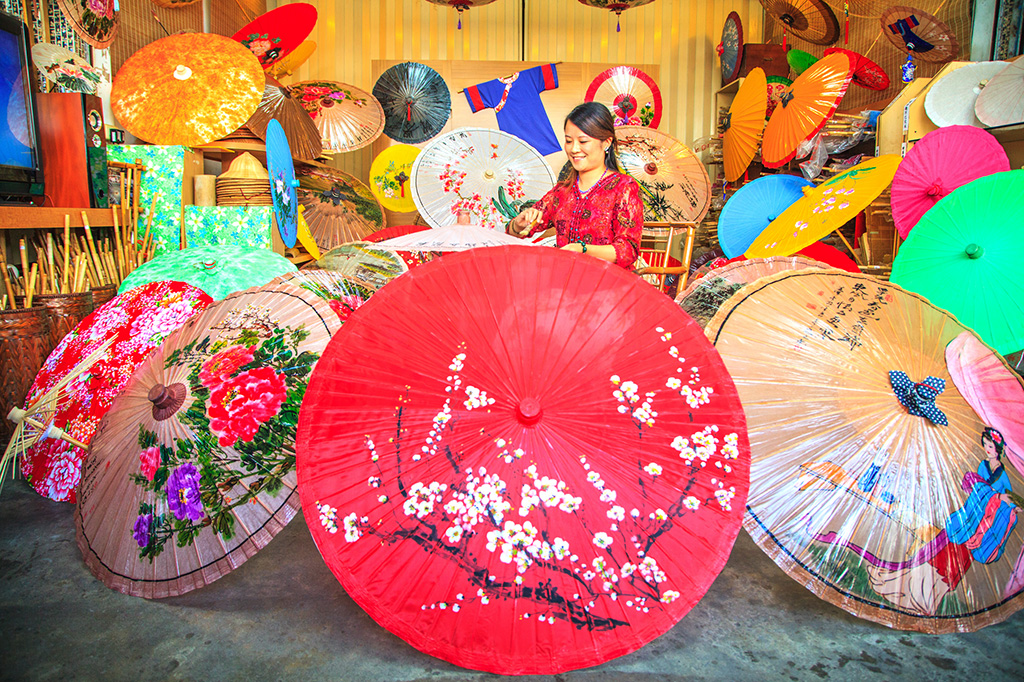
If you want to observe the multifaceted manifestations of 5,000 years of culture, or feel for yourself the joy and harmony of life in a heterogeneous society, then a tour of Taiwan is just what you need.
Perhaps the best thing about experiencing the endless variety of Taiwan’s cultural and artistic wonders is that whatever you like, whether it be folk festivals, religious practices, traditional skills, or modern art, everything is right at hand. You can find expressions of the country’s rich and varied arts on every street and lane, and in the lives of the people. And every part of Taiwan – north, center, south, and east, and even the offshore islands – presents its own unique local characteristics, profoundly different yet centered on a common cultural core. This is the source of Taiwan’s magnetic allure.



